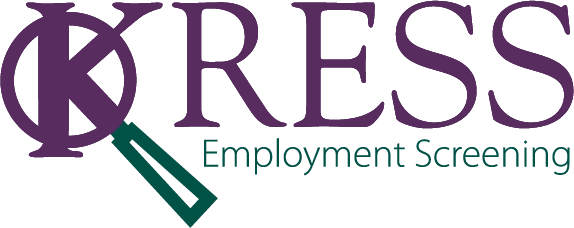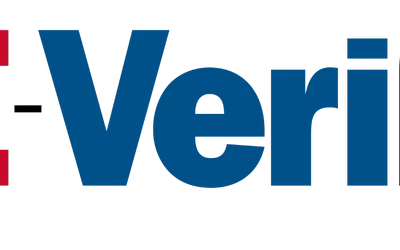Hiring new employees is one of the most important decisions businesses make. But when employment screening reveals something concerning in a candidate’s background check, employers must follow a specific legal process to ensure fairness and transparency. This process is known as adverse action, and it’s regulated by the Fair Credit Reporting Act (FCRA). Failing to comply with these regulations can expose businesses to lawsuits and fines.
“Navigating compliance in employment screening can feel overwhelming, especially with regulations like the FCRA,” explains Chandra Kill, CEO of KRESS Employment Screening, who has been pioneering advancements in background screening since 1997. “Understanding the adverse action process isn’t just about avoiding penalties; it’s about ensuring a fair and transparent hiring process for all parties involved.”
In this guide, we’ll walk you through everything employers need to know about adverse action, ensuring your hiring process remains fair and legally compliant.

What Is Adverse Action in Employment Screening?
Adverse action refers to any negative decision an employer makes about a job applicant or employee based on information obtained from a background check or consumer report. Common adverse actions include:
Not hiring a candidate
Refusing to promote an employee
Terminating an employee based on screening results
The FCRA requires employers to follow specific steps to ensure that candidates are treated fairly when adverse action is considered. This law protects individuals from being unfairly disqualified based on inaccurate or incomplete information in their background reports.
Step 1: Pre-Adverse Action Notice
Before taking adverse action, the first step an employer must take is issuing a Pre-Adverse Action Notice. This notice alerts the candidate that adverse action is being considered but not yet final. It gives the individual the opportunity to review and respond to the information in their background report.
“Pre-adverse action notices serve as a critical safeguard in the hiring process,” Chandra explains. “By giving candidates the opportunity to review the report and respond, employers help ensure that decisions are based on accurate information. It also reinforces transparency, which is essential in maintaining trust throughout the hiring journey.”
What Must Be Included in the Pre-Adverse Action Letter?
Statement of Consideration: Clearly inform the candidate that you’re considering taking adverse action based on the information in their background check.
A Copy of the Background Check Report: The candidate must receive the exact report used to make the decision.
Summary of Rights Under the FCRA: This document explains the individual’s rights, including the right to dispute inaccurate or incomplete information.
Consumer Reporting Agency (CRA) Contact Information: Include the name, address, and phone number of the CRA that provided the background check.
Disclaiming Responsibility: The notice should clarify that the Consumer Reporting Agency (CRA) did not make the decision and cannot explain why the decision is being considered.
Best Practice: Include a clear statement encouraging the candidate to review and dispute any errors in the report. The goal is to ensure that no adverse action is taken based on faulty or misleading information.
How KRESS Helps: Managing these notices can be time-consuming, especially when multiple candidates are in different stages of the hiring process. KRESS offers automated solutions for generating and sending pre-adverse action notices, ensuring that your business complies with FCRA regulations.
Step 2: The Waiting Period
Once the pre-adverse action notice is sent, the FCRA requires employers to provide a reasonable amount of time for the candidate to respond or dispute the information. This period allows the candidate to fix inaccuracies before any final decision is made.
“The waiting period is there to ensure due process,” Chandra notes. “While it can be tempting to move quickly in the hiring process, this step is critical in maintaining fairness. Employers should be cautious about rushing through it, as it gives candidates a fair chance to correct any errors before a final decision is made.”
What Is a “Reasonable Time”? While the FCRA doesn’t specify an exact waiting period, industry best practices suggest waiting 5-7 business days before moving forward with the final adverse action decision. This timeframe is widely accepted and provides sufficient time for candidates to respond or gather evidence. During this time, the employer should put the hiring decision on hold to avoid any premature actions. This step is critical for maintaining compliance.
How KRESS Helps: KRESS helps you track this waiting period, ensuring that you don’t move forward with a final decision too soon. Our systems manage the timeline and automate alerts to keep the process on track.
Step 3: Final Adverse Action Notice
After the waiting period has passed, and if the employer decides to proceed with adverse action, a Final Adverse Action Notice must be sent. This notice confirms that a negative decision has been made based on the information from the background check.
“The final adverse action notice is an important moment in the process,” Chandra explains. “Not only does it officially close the loop with the candidate, but it also ensures that employers are adhering to their obligations under the FCRA. Documenting and communicating these steps clearly protects both the employer and the candidate, providing transparency and accountability.”
What Must Be Included in the Final Adverse Action Notice?
Statement of Adverse Action: Clearly state that the adverse action (e.g., refusal to hire, terminate, or not promote) has been taken.
CRA Contact Information: Provide the name, address, and phone number of the CRA that provided the report.
Disclaiming Responsibility: The employer must again inform the individual that the CRA did not make the hiring decision and cannot explain the reasons for the adverse action.
Right to Dispute: The notice must inform the candidate of their right to dispute the accuracy or completeness of the report.
Right to Request a Free Copy: Inform the individual that they have the right to request a free copy of the background report within 60 days.
Why This Matters: The final notice protects both the candidate’s rights and the employer from potential legal disputes. By clearly outlining the individual’s rights to dispute the report, the employer shows they’ve acted fairly.
How KRESS Helps: Our services ensure that the Final Adverse Action Notice is generated and delivered in compliance with FCRA requirements. We help you avoid any missteps, which can be costly in terms of lawsuits or regulatory fines.
Compliance and Legal Considerations
Beyond the basic steps of adverse action, there are additional compliance factors that vary by state and locality. Employers must be aware of these regulations to stay fully compliant.
Ban-the-Box Laws
Many states and local jurisdictions have adopted Ban-the-Box laws, which limit when employers can inquire about criminal history during the hiring process. These laws often require employers to conduct background checks later in the hiring process and ensure that adverse action is not taken prematurely.
Individualised Assessments
Certain locations, like New York City and Los Angeles, require employers to conduct an individualised assessment before making an adverse action decision based on criminal history. Employers must consider:
Nature of the offense: What crime was committed?
Time elapsed: How long ago did the offense occur?
Relevance to the job: Is the offense related to the duties of the position?
“State and local laws are constantly evolving,” says Chandra. “Employers must stay updated on how these laws intersect with federal regulations like the FCRA. It’s important to remember that what works in one state may not apply in another, and ignoring these nuances can lead to compliance risks.”
EEOC Guidance
The Equal Employment Opportunity Commission (EEOC) recommends that employers consider the relevance of criminal history to the position in question. Factors like the severity of the crime and how long ago it occurred are critical in making fair decisions.
Recordkeeping
Employers should maintain clear and detailed records of the entire adverse action process to demonstrate compliance with both the FCRA and local laws. Failing to document these steps could lead to significant legal liabilities.
How KRESS Helps: We track and document the entire process for you, from the initial pre-adverse action notice through to the final notice. With KRESS, you’re not only staying compliant but also saving time and minimising risk.
Conclusion
The adverse action process is a vital step in protecting both employers and applicants during the hiring process. By adhering to the guidelines outlined in the FCRA, employers can avoid legal penalties, ensure fairness, and make informed decisions.
“Ultimately, compliance is about more than avoiding fines,” Chandra concludes. “It’s about building a process that’s transparent, fair, and reliable for both employers and candidates. Understanding each step of adverse action is vital in maintaining that balance.”
But this process can be complex, and missing even one step can lead to costly lawsuits. That’s where KRESS comes in. Need help managing your background screening process and ensuring compliance with the FCRA? Contact us today to streamline your hiring process and stay on the right side of the law.









